
THINK LITTLE HOUSE ON THE PRAIRIE - but in your yard. Those who've read pioneer Laura Ingalls Wilder's magnum opus can envision the breathtaking beauty of the prairie through her simple yet detailed prose.
Little Bluestem Attracts birds, even game birds, and blooms in late summer into early fall.
In the chapter "Prairie Days," Wilder writes, "There was only the enormous, empty prairie, with grasses blowing in waves of light and shadow across it, and the great blue sky above it, and the birds flying up from it and singing with joy because the sun was rising." What a heartwarming homage.
Butterfly Weed Monarch butterflies' host plant and a food source for butterflies, bees and hummingbirds. Blooms early to late summer.
Prairie plant proponents know that they provide picturesque additions to backyard gardens. Better yet, they produce plenty of benefits for birds, bees, pollinators and other local wildlife, and they do so from early spring through late fall.
Aromatic Aster Attracts pollinators and birds. Blooms late summer to fall and can be aggressive and overwhelm small spaces.
Understanding the Prairie Ecosystem
Prairies are substantial tracts of flat grassland that dominate the Midwest. According to the National Park Service, nearly a third of North America was once covered in grassland.
When people hear "prairie," many may imagine farm fields growing golden wheat. Farming aside, this habitat's plants evolved to tolerate cold winters, warm summers and environmental disturbances. They're well-adapted to maximize photosynthesis and minimize water loss.
This story is from the {{IssueName}} edition of {{MagazineName}}.
Start your 7-day Magzter GOLD free trial to access thousands of curated premium stories, and 9,000+ magazines and newspapers.
Already a subscriber ? Sign In
This story is from the {{IssueName}} edition of {{MagazineName}}.
Start your 7-day Magzter GOLD free trial to access thousands of curated premium stories, and 9,000+ magazines and newspapers.
Already a subscriber? Sign In
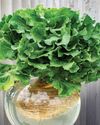
Basics of Hydroponics
Use these top tips and plant picks to have a successful soil-free garden
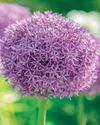
Rooted in Resilience
These hardy perennials will thrive in most zones
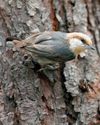
Social and Supportive
Brown-headed nuthatches take a helpful approach to raising their young

All About Owl Pellets
And why you should give a hoot about them
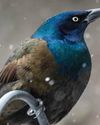
Ask the Experts
Advice from our pros about houseplants, bird feeding and more

BRING THE OUTDOORS IN
Making a terrarium is about as close as you can get to a Zen DIY project. Once you have gathered the proper materials and squared away your plant selections, it's as simple as layering it all together and watching your mini ecosystem thrive. Here, I'll walk you through my foolproof process and cover all the required elements for good filtration, healthy soil, strong root growth and resistance against fungus and disease.

GROW THIS. NOT THAT
Six easy-to-grow houseplants—and six that may not be the right choice for you
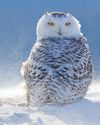
Winter MAGIC
Forecasts may be frigid, but grab your binoculars because birding opportunities are still incredible

Sense or Nonsense? - Why some birds can taste and smell - but others can't
Does a porcelain berry taste like a blueberry to a gray catbird? Does a block of lard smell like frying bacon to a northern flicker? The short answer is no. While some avian species do have a well-adapted sense of taste or smell, they can't distinguish between flavors and odors the way humans can. They're not picking up every ingredient in the suet you put out, says José Ramírez-Garofalo, an ornithology researcher at Rutgers University in New Jersey and the director of Freshkills Biological Station in Staten Island, New York.

Maple Mania - Amazing facts about this fall foliage mainstay
Amazing facts about this fall foliage mainstay